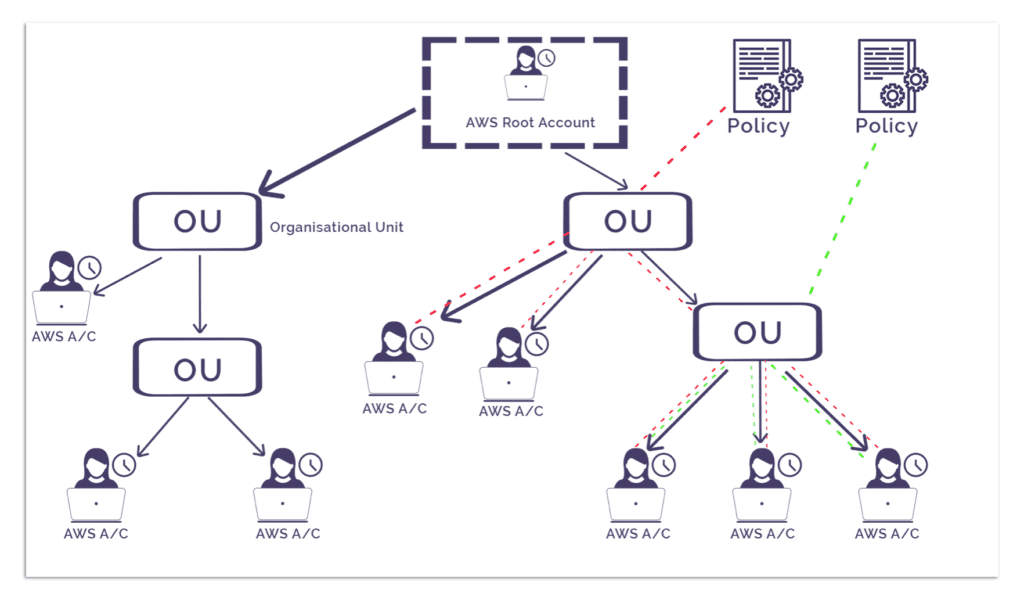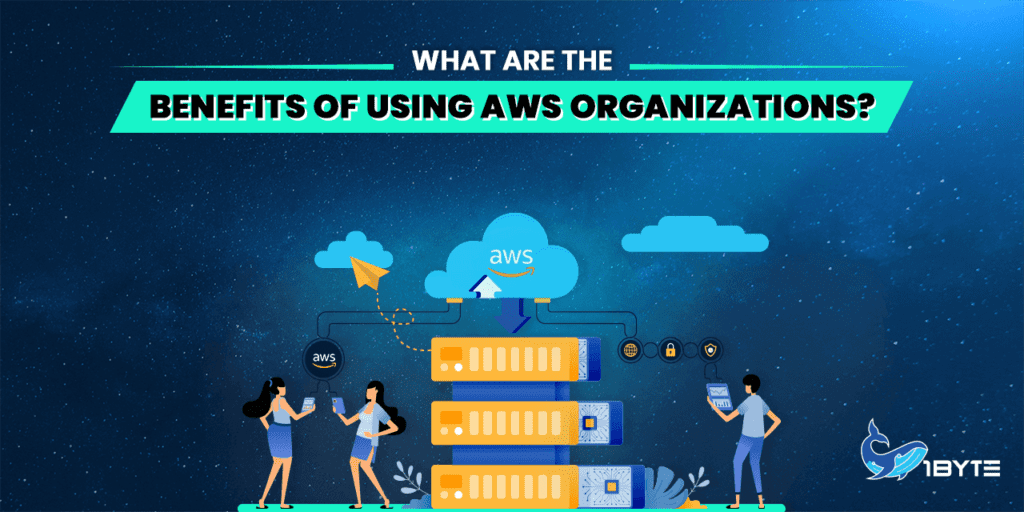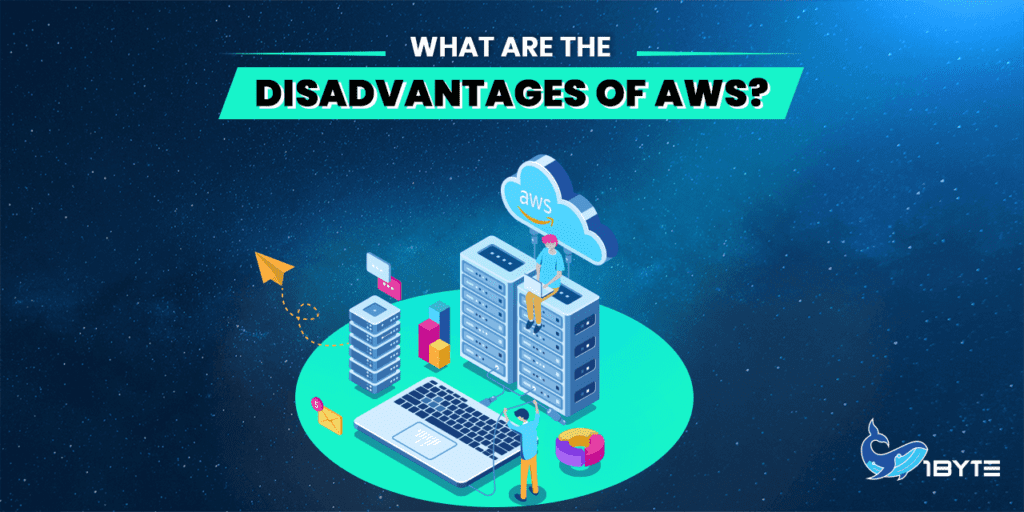When your business needs to grow and you use AWS at the same time, there will come a time when trying to fit all of your workloads into a single AWS account will become more confusing and hard to manage. AWS Organizations help with this. What are the benefits of using AWS Organizations? Simply put, it is a service that lets customers manage and control groups of AWS accounts and the processes and policies that apply to those accounts from a single location. The service in question is a service for managing AWS accounts.
This article will give you a more detailed explanation of what AWS Organizations is and show you how to build it up yourself using the best practices in the business.
What Is AWS?
Amazon Web Services launched in 2002, and AWS cloud products became available in 2006. Amazon Web Services is a one-stop shop for infrastructure, platform, and software services. They offer a wide range of products, such as storage, analytics, and remote computing, among others. With AWS, a company no longer needs to run its own server to host a website. They make sure their data is safe by putting in place extra safeguards like spreading their data centers around the world. In the 21st century, there have been more new businesses starting up, and Amazon Web Services is the best place to start a new business from scratch.

The company offers solutions for cloud computing that are flexible and don’t cost much overall. These solutions have many different functions, such as storing databases, delivering content, and distributing media. AWS is reliable, which is one of the main reasons why so many companies choose to use it. AWS is without a doubt the best choice when it comes to the availability of services for both the customer and the provider. If something goes wrong, both the service provider and the customer can quickly get the service back up and running. The service provider can always give an excellent experience.
Despite its huge sets of benefits, you do receive some disadvantages when using AWS.
FURTHER READING: |
| 1. AWS Cambodia: Everything You Should Know |
| 2. What Is AWS (Amazon Web Services): All You Need To Know |
| 3. AWS Server Pricing Guide and Optimization Tips |
What Are AWS Organizations?
AWS Organizations is a relatively new service for managing accounts first launched in February 2017. It lets users manage multiple AWS accounts from a single place. As an organization’s administrator, it helps you meet the rules for compliance, financial responsibility, and security.
With AWS Organizations, you can grow your workloads on AWS while still keeping your environment under centralized control. Organizations can help you programmatically create new accounts and assign resources, simplify billing by setting up a single payment method for all of your accounts, create groups of accounts to organize your workflows, and apply policies to these groups for governance, whether your business is a growing startup or a large enterprise.
AWS Organizations also connect to other AWS services. This lets you set centralized configurations, security mechanisms, and resource sharing for all of the accounts in your organization.
How Does It Work?
AWS Organizations are the administrative separation between different AWS accounts. Only an AWS master account can make an AWS organization, which means it can fully receive the benefits of using it. From a master account, you can make other accounts. Once these accounts have been added to the organization, they are called “connected accounts”. Because of this, an organization can have both a single master account and multiple connected accounts. You can’t link the same account to more than one Organization at the same time.

Organizations can be further divided into Organization Units (OU), which hold different AWS accounts and have names like “Production” or “Development”. There can be more than one Organization Unit in an Organization. Service Control Policies (SCP) are a set of policies that can be linked to organizational units (OUs). They can be used to control access to services in different accounts. Organizations make it possible to do things like have consolidated account billing, shared IAM user databases, and policy-based service control.
As the administrator of an organization, you can create new AWS accounts, close down existing accounts, and invite other accounts to join the organization. In addition to this, it has a more flexible hierarchical structure with organizational units for your AWS accounts and resource groups (OUs). AWS Organizations is a global service that users in any AWS Region can connect to through a single endpoint. You don’t have to choose which area you want to visit.
How to Get Started with AWS Organizations?

To start reaping the benefits of using AWS Organizations, you must first know how to begin. You need to decide which of your AWS accounts will be the management account beforehand. You can either create a brand-new AWS account or choose one already exists. The following steps offer something concrete to follow.
1. Log in as an administrator to the AWS Management Console using the AWS account you plan to use to run your business.
2. Go to the AWS console for Organizations.
3. Choose the option Create Organization.
4. Choose the features that you want users in your organization to be able to use. Either all of the features or consolidated billing-only features. If you want to use all of the central management features that AWS Organizations has to offer, you should make sure to select all of the features.
5. You can add AWS accounts to your business using either of the following two methods: Invite users who already have an Amazon Web Services account to join your company by using their AWS account ID or the email address associated with their account; Create new Amazon Web Services accounts.
6. By putting your AWS accounts into OUs, you can model the setup of your organization.
7. Create policies for organizational units (OUs), accounts, or the organization as a whole, such as those for service control or backup (only available for all-feature organizations).
8. Turn on Amazon Web Services services that are already connected to AWS Organizations.
You can also use the AWS Command Line Interface (for access via the command line) or SDKs to build a new organization by following these steps.
4 Components of AWS Organizations
If you want to know everything it can do, you need to know about the parts and architecture it gives your accounts and groups. With the help of the next list, you should be able to get a clear picture of how AWS Organizations’ hierarchy works.
1. Master Account(s)
This is the main account for an AWS Organization. It has administrative access to all the accounts that belong to that AWS Organization, along with all of the benefits that come with it. The master account will help keep track of all billing and logs for all accounts in the Organization. It is also for managing all accounts.
In a general sense, this account is the one that has to pay all of the costs that the member accounts incurred. It also has to do the things that a payer account does. Logging into this AWS account is the first step in setting up your business.
If you have a master account, you can make new accounts and get rid of old ones in the different groups. One of the other benefits of Using AWS Organizations is that you can manage invitations. Using a master account can help in many other ways also, particularly integrations and the implementation of policies.
2. Member Account(s)
Accounts in an AWS Organization that aren’t the Master account are called Member accounts. These can be either new accounts that have been added to the AWS Organization or accounts that already exist.
3. Organization Units (OU)
Organization Units are the units in which all accounts are put into different groups. People can make many OUs inside of an Organization, and these OUs can be put inside of each other.
You can set up a hierarchy by putting other organizational units inside one OU. Because of this, they can match the organization’s structure. You can’t add the same account to more than one organizational unit when using OU.
4. Service Control Policies (SCP)
Service Control Policies help one make different policies when working with AWS Organizations. It is a document in your Amazon Web Services account that can be used to manage permissions or rules for people or resources or to set them up. This could make it harder for users to do certain things in their AWS accounts.
As soon as they are put into action, they will affect every resource in that account. They are the best way to limit the rights or resources that people or groups have. It can also help you log in to the Root account. You can find it by going to AWS Organizations, then Policies, then Service Control Policies.
6 Features of AWS Organizations
When using AWS Organizations, you have several unique features to utilize to start getting usage benefits. For the purpose of this article, we will only talk about some of them below.

1. Centralized Management
Users can combine all of their accounts into one organization and manage them all from one place. Users can add both new and old AWS accounts to Organizations in AWS.
2. Central Billing
Accounts that are part of an AWS Organization only need one master account to handle billing. Because of this, a lot of time and work are saved.
3. Account Grouping
Setup for accounts in AWS Organizations can be either standard or hierarchical, depending on what the user wants. Users can set up different Organization Units that have different access levels, and they can even put OUs inside of each other.
4. Policies
Users can set up policies in AWS Organizations to set limits for each account and limit what actions they can take based on what roles they have.
5. Integration
AWS Organizations can connect to AWS Identity and Access Management (IAM). Due to that, it’s possible to assign roles to users and accounts. Integration with the other services that AWS has to offer is also possible. For example, the AWS Organization service can link up with other AWS services like the AWS backup service, CloudTrail, and so on.
6. Free-to-Use
Setting up an AWS Organization or using one doesn’t cost anything. The user will only be charged for the number of resources that each account actually uses. aw
What are the benefits of using AWS Organizations? The 7 Benefits
When multiple accounts are kept outside of AWS Organizations, there is a chance that they will not be managed well. AWS Organizations make it easier to keep track of the accounts and make it possible to manage and keep an eye on them all from one place. It makes sure that every account follows the firm’s compliance policy and gives you the power to control who can use which AWS services.

On the other hand, even though the consolidated billing system would charge the management account, you could get big discounts based on how much you buy, which you might not be able to do with a single account. In this section, we’ll list all of the of Using AWS Organizations in a few different categories so that you can get a better idea of how AWS Organizations can help you get an edge over other companies in your industry. Let’s discover the 7 benefits of using AWS organizations below.
1. Rapid Scalability
With AWS Organizations, you can quickly grow your environment by using automation to do so. Also shown are a number of accounts that have built-in security restrictions. It lets your team set up specific accounts, which you can then manage by using AWS cloud formation StackSets to manage the programmatic resources and permissions associated with those accounts.
2. Custom Environment
Another benefit of AWS Organizations is that you can make policies that give your team the resources they need while keeping them safe behind a wall you build. You can also put accounts in organizational units, and then use service control policies, which you can set up, to limit the rules for the OUs.
3. Data Management

With AWS CloudTrail, you can see all of the information about the events and actions that are happening across all of your accounts. But AWS backup lets you keep track of what needs to be backed up, and the AWS Control Tower helps you build cross-account security audits and manage rules that are applied to accounts.
With the help of Amazon GuardDuty, you will also be able to keep an eye on your resources, find potential risks, and control all of your security services from one place.
4. Access Control
AWS Single Sign-On (SSO) and your company’s active directory work together to make it easier for everyone in the company to manage user-based permissions. It lets you do jobs that require the least amount of access and also lets you make permissions that are specific to each job type. In addition, it lets you control how AWS services operate by assigning service control policies to organizational units, users (user accounts), and account groups.
5. Cost Tracking
The best way for AWS enterprises to keep track of costs is through consolidated billing, a primary benefit of AWS Organizations. All of the spending will show up on a dashboard that reveals all of the accounts. With the help of the streamlined and unified cost management system, you’ll be able to take advantage of discounts for buying in bulk while keeping only one account.
6. Upgraded Security
AWS Organizations benefits you with a specific security group. You could give them access to all of the available resources, but they could only read the information. This would help identify and resolve any security concerns. You can also give the group permission to use Amazon GuardDuty’s active monitoring and threat reduction features. In addition, the IAM Access Analyzer makes it possible to quickly identify any unintended access to your resources.
7. Resources Sharing
AWS has made it very easy to share any central resource that your organization uses across the accounts that you have within the organization. You can use AWS Resource Access Manager to make sure that resources are on Amazon Virtual Private Cloud. You can also use it to make sure that everyone in your business has access to the core resource.
The Disadvantages of Using AWS

No technology is perfect. AWS does have some limitations worth talking about. Even though this information is not on the AWS website, it is very important for a user to know what the problems are with using AWS.
1. Confusing Billing
AWS is a great service, but it has a big disadvantage with its pricing system: it can be very hard to understand. If the owner of a small business doesn’t know much about technology, this could be very hard to understand. Prices for Amazon Web Services might be different in different places, depending on things like the cost of land, fiber, electricity, and taxes, among other things. When you need more technical help, there are other things that can happen. You can choose from three different packages: Developer, Business, or Enterprise.
Depending on which one you choose, the price will change. This will change how much you have to pay each month. But with services like Amazon CloudWatch, you can keep track of how your services are used, and Serverless Data Lake can help you figure out how much the services in your area cost.
Because of such issues, it is best to work with a reseller whenever possible. They will keep giving you the same services, but this time you will be able to understand the bill or invoice that they send you. But as long as that doesn’t bother you, there shouldn’t be any problems. But there is one thing you should know: Amazon is about as open and honest as you can get. The good things about using AWS end here. We’ve found out many times that users have spent a lot of money without their knowledge.
2. Service Limits
The platform sets limits on AWS services, which can become quite a disadvantage. The rules are there to do the following: Keep you from spending too much money on your first time using the platform, and keep the core of the system safe from resources that are being used too much. Two of the most important things that all Cloud-based infrastructures, including AWS, have in common are the ability to scale and the ability to add more resources on demand. So, what’s the real problem here?
The answer is not hard in any way. You don’t really need so many things to get the job done. Most businesses don’t need more than five Elastic IPs or twenty EC2 instances per region. By default, the restrictions are set up to meet the needs of a typical user. If you raise them, you’ll have to pay more. You can ask for more resources if you need more than five Elastic IP addresses in a given region, and similarly for others. On the official website for AWS service constraints, you will find the whole list of restrictions that Amazon Web Services imposes.
3. Technical Support Fees
When a crisis happens, it’s very helpful for a business to have backups and, ideally, a team of experts who can handle the situation. When the help, on the other hand, costs money, it becomes a liability.

With the AWS monthly fee, you are guaranteed help, but the fee itself is not very flexible. Users will have to pay for premium support packages if they want quick and thorough help. Support costs different amounts depending on the package (Developer, Business, or Enterprise). The cost of the developer support package is either $29 or 3% of the monthly AWS costs, whichever is higher.
4. Common Cloud Computing Problems
Moving to cloud computing comes with a number of problems, such as backup protection, the risk of data leaking, privacy issues, security worries, downtime, and a limited amount of management. Even though it’s natural to worry about these possible disadvantages of AWS, the cloud computing system has already taken care of most or all of them.
These problems are not unique to AWS. Instead, they are common among businesses that offer cloud computing services. But because Amazon knows how important it is to keep these, your business won’t have to worry about any of this because they will do it for you.
5. Requires Experts
If you decide to use Amazon Web Services as your cloud provider, you should be ready to learn new things and spend money on your employees’ education. We have said before that if you want to use Amazon Web Services, you will need to know what you are doing because AWS is a very good and large platform. You will need to know a lot about the AWS platform if you want to use all of the helpful features and services that AWS offers.
If you want to run your AWS platform well, you will need to put money into your staff. Employing an experienced engineer who has worked with AWS before is usually a good idea, but you should also help your team learn as much as they can about the platform. Amazon Web Services is what AWS stands for. They can use a wide range of tools, like the extensive AWS documentation, community websites, discussion forums, and online learning platforms.
Certification is always a good way to end the learning process, so encourage your coworkers to move forward and get certified in AWS. Getting a certificate at the end of your education is always
Conclusion
To sum up, AWS Organizations is a great feature that lets AWS customers put all of their accounts in one place. It is easier to use it and manage the different accounts and their fees from one place than to do each of these things separately. Users can save a lot of time and effort by using this feature to manage their many accounts. At first, it might feel a little complicated to use, but as the user gets better at it, they’ll find that it saves them a lot of time, effort, and money.
It is very important to realize how different our hopes are from the world around us. When it comes to AWS, you shouldn’t expect a perfect system with a simple setup where everything and everyone is ready and waiting just for you. AWS is a complicated infrastructure with its own rules and regulations, which you are expected to know and follow. This can become disadvantages if you don’t know yet how to navigate the world of AWS. Once you are used to it though, your trip through the Cloud will be much easier than you could have ever imagined.
If you are an AWS Partner and have questions about the benefits of AWS Organizations or about AWS in general, don’t be afraid to get in touch with 1Byte. We have cloud experts on staff who are available 24 hours a day, 7 days a week to help you with any technological task.

